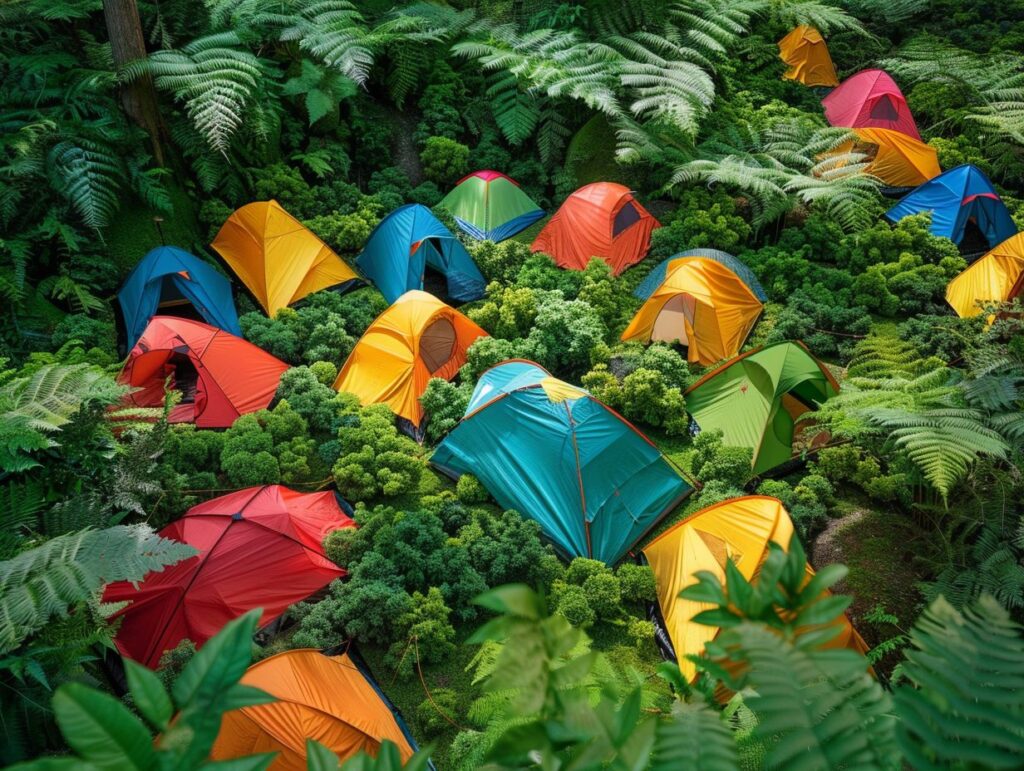If you’re an avid backpacker or looking to venture into the world of backpacking, having the right tent is essential for a successful outdoor adventure.
In this ultimate guide to backpacking tents, we’ll cover everything you need to know about these essential shelters, from why they are important to how to choose the best one for your needs.
We’ll also explore the different types of backpacking tents, how to set them up, care for them, and recommend some of the best options on the market.
Whether you’re a solo hiker or part of a group, we’ve got you covered with all the information you need to make the most of your outdoor experience.
Key Takeaways:
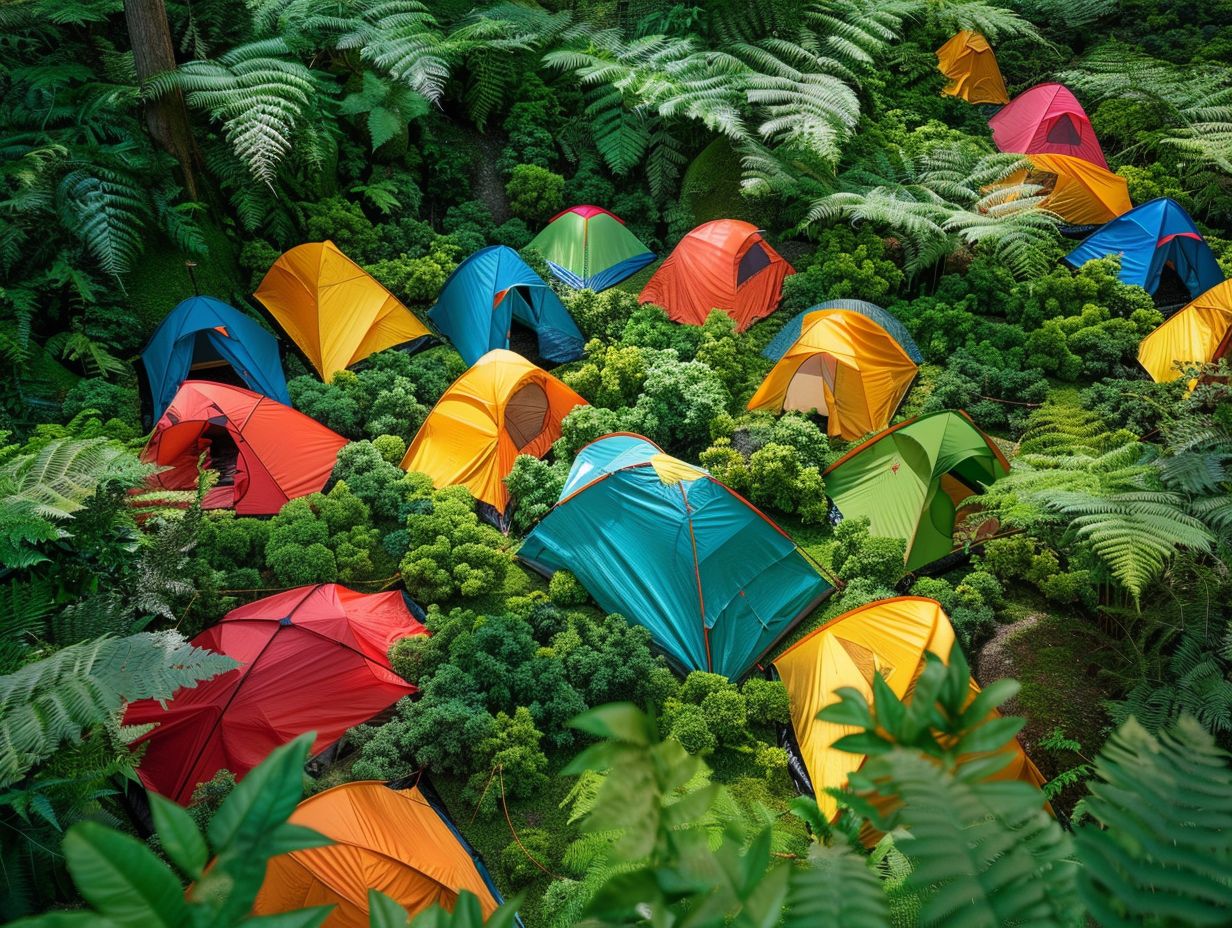
- Size and weight are important factors to consider when choosing a backpacking tent, as they affect both portability and comfort during your trip.
- Durability and weather resistance are crucial for a successful backpacking trip, so make sure to choose a tent with strong materials and proper ventilation to withstand different conditions.
- When setting up a backpacking tent, carefully follow instructions and consider using tent stakes and guylines to ensure stability and protection from wind and rain.
What Should You Consider When Choosing a Backpacking Tent?
When selecting a backpacking tent, it is imperative to take into account several factors, including dimensions, weight, longevity, weather resilience, assembly convenience, ventilation, and cost, in order to ascertain that it aligns with your individual camping requirements and preferences.
1. Size and Weight
The dimensions and mass of a backpacking tent hold significant importance, with factors such as packability, minimum weight, and packaged weight being crucial for ensuring it can be comfortably accommodated in a backpack without adding unnecessary bulk.
A tent’s capacity has a direct correlation with its dimensions and mass; tents designed for 3-4 individuals will naturally possess greater weight and bulk as compared to solo tents. When selecting a tent, it is imperative to strike a harmonious balance between size and weight that aligns with one’s requirements.
For solitary hikers or those who prefer minimalism, a lightweight tent with a smaller capacity may be more appropriate, while larger groups may prioritize spaciousness over weight. The right combination ensures that the tent is not only portable but also offers adequate space for a comfortable outdoor experience.
2. Durability and Weather Resistance
The importance of durability and weather resistance in a backpacking tent cannot be overstated, particularly when confronting adverse conditions such as Sierra storms.
High-quality materials with appropriate denier and waterproof coatings are essential to ensure a tent’s longevity and reliable protection.
When venturing into the wilderness, having a tent that can withstand harsh environmental elements is crucial for a successful outdoor experience.
The utilisation of durable materials and weatherproof features, such as waterproof coatings and sturdy structures, significantly influences the tent’s ability to endure challenging conditions.
Be it strong winds, heavy rain, or snowfall, a well-constructed tent that integrates these components offers campers a sense of security. Investing in a tent equipped with these attributes not only guarantees protection but also safeguards against potential mishaps that may arise from inadequately designed shelters.
3. Ease of Set-Up
The ease of setup represents a critical aspect of a backpacking tent, with the presence of clear instructions, simplified pole systems, and user-friendly designs ensuring that campers can swiftly and effectively pitch their tent, even following an extended day of hiking.
The design of the tent’s poles significantly influences the seamless setup process. Numerous contemporary tents incorporate colour-coded poles and clips, enabling users to effortlessly match and connect the various components without encountering confusion.
The utilisation of lightweight yet durable materials in the pole construction enhances portability while upholding structural integrity.
By amalgamating these considerate design elements with comprehensive setup instructions, campers are provided with a streamlined experience when erecting their temporary shelter in the wilderness.
4. Ventilation
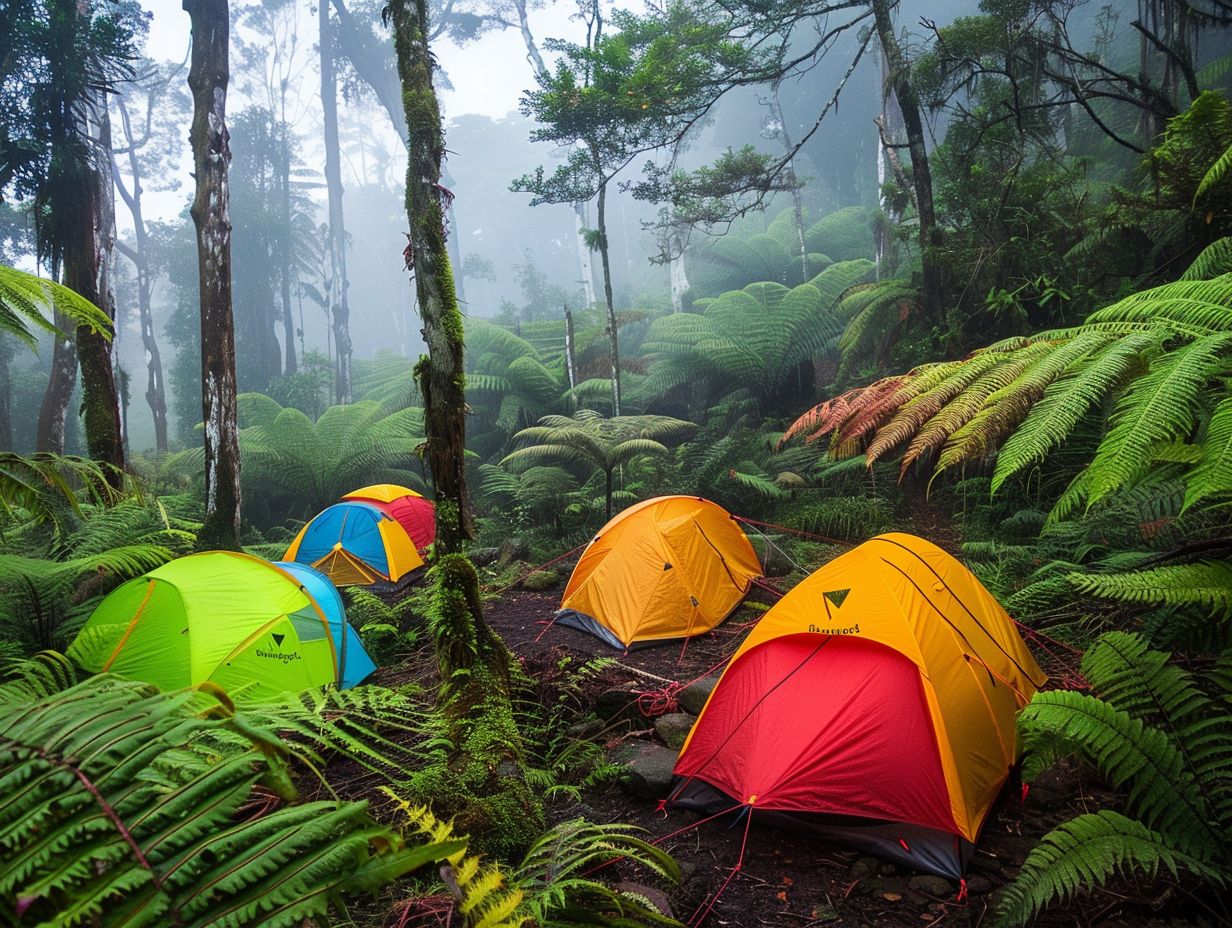
Adequate ventilation within a backpacking tent is essential for improving comfort and sustaining a habitable environment by mitigating condensation accumulation and guaranteeing a breathable atmosphere throughout the duration of the night.
The presence of mesh panels and strategically positioned vents is instrumental in facilitating the circulation of fresh air within the tent, thereby diminishing any feelings of stuffiness and ensuring consistent temperature levels.
By fostering airflow, these ventilation components facilitate the dispersion of moisture originating from respiration and damp equipment, thereby assisting campers in maintaining warmth and dryness.
Effective ventilation also aids in the reduction of unpleasant odours and stagnant air, culminating in the creation of a more enjoyable sleeping setting that promotes a peaceful night’s rest amidst the natural environment.
5. Price
The cost of a backpacking tent can vary significantly, and it is essential to understand the price per ounce and packed size to assess the tent’s value in relation to its features, quality, and overall performance.
When evaluating the price of a tent, it is crucial to take into account factors such as material quality, weather resistance, and user-friendliness. A tent with a higher price tag may include features like reinforced seams, premium waterproofing, and convenient vestibules for storage.
On the other hand, more budget-friendly options can still offer adequate shelter, especially if emphasizing weight and packability. Durability is another crucial factor to consider when comparing the cost of a tent. It is imperative to ensure that the tent has sealed seams, sturdy zippers, and the ability to withstand diverse weather conditions.
By striking a balance between financial constraints and essential features, individuals can make an informed investment in a tent that aligns with their camping requirements without exceeding their budget.
Types of Backpacking Tents
Various types of backpacking tents are available, each characterized by distinct structure types and features. These include single-skin and double-skin designs, self-supporting models, and non-self-supporting options offered by reputable brands such as Big Agnes, MSR, and Nemo Equipment.
1. Single-Wall Tents
Single-skin tents are crafted with a focus on high packability and lightweight construction, typically incorporating integrated waterproof coatings. However, they frequently require advanced ventilation solutions to effectively manage condensation.
The simple design of single-skin tents facilitates quick and easy setup, making them particularly suitable for minimalist backpackers or individuals seeking to travel with minimal weight. In terms of weight, single-skin tents often outperform their double-skin counterparts, making them a preferred choice among ultralight enthusiasts.
Ventilation emerges as a primary challenge associated with single-skin tents. The lack of a barrier between the flysheet and inner tent can lead to significant condensation accumulation, particularly in humid environments.
2. Double-Wall Tents
Double-wall tents are renowned for their exceptional weather resistance and spacious interior, characterized by an inner breathable layer and an outer rainfly that collaborate to maintain a dry and comfortable environment.
This innovative design not only ensures protection from precipitation and strong winds but also facilitates outstanding ventilation, thereby reducing condensation and enhancing airflow within the tent.
Many double-wall tents feature adjustable vents on the rainfly, enabling users to regulate airflow based on prevailing weather conditions. Although double-wall tents typically offer heightened weather protection and comfort, it is important to acknowledge that they may exhibit a slightly heavier weight when compared to single-wall tents.
However, this additional weight is often justified by the superior weather resistance and enhanced comfort they offer, particularly in challenging weather conditions.
3. Freestanding Tents
Self-supporting tents are widely favoured due to their user-friendly assembly process and flexibility. These tents are supported by poles that enable them to stand independently without requiring pegs.
This characteristic makes them a convenient choice for campers who value a straightforward setup process, offering quick shelter in various environments. Their ability to adapt to different terrains, including rocky surfaces or areas with limited space for anchoring, expands the options for outdoor enthusiasts when selecting a campsite.
However, it is important to note that self-supporting tents may not offer the same level of resilience to extreme weather conditions as pegged tents do. This could potentially raise stability concerns during periods of high winds or heavy rainfall.
4. Non-Freestanding Tents
Non-freestanding tents are typically characterised by their reduced weight and smaller spatial requirements, making them well-suited for minimalist backpackers who prioritise weight efficiency and are able to identify appropriate campsites for anchoring their tent using pegs and guy ropes.
The lightweight construction of non-freestanding tents offers a distinct advantage to individuals embarking on long-distance hikes, seeking to alleviate the physical strain on their backs over extended journeys.
Given that these tents rely on pegs and guy ropes for structural support, campers must conscientiously evaluate the terrain in which they intend to pitch their tent to ensure a secure anchoring.
Erecting a non-freestanding tent demands a higher level of proficiency and experience compared to freestanding models, as the precise tensioning of guy ropes and strategic placement of pegs are pivotal for achieving optimal stability.
How to Set Up a Backpacking Tent?
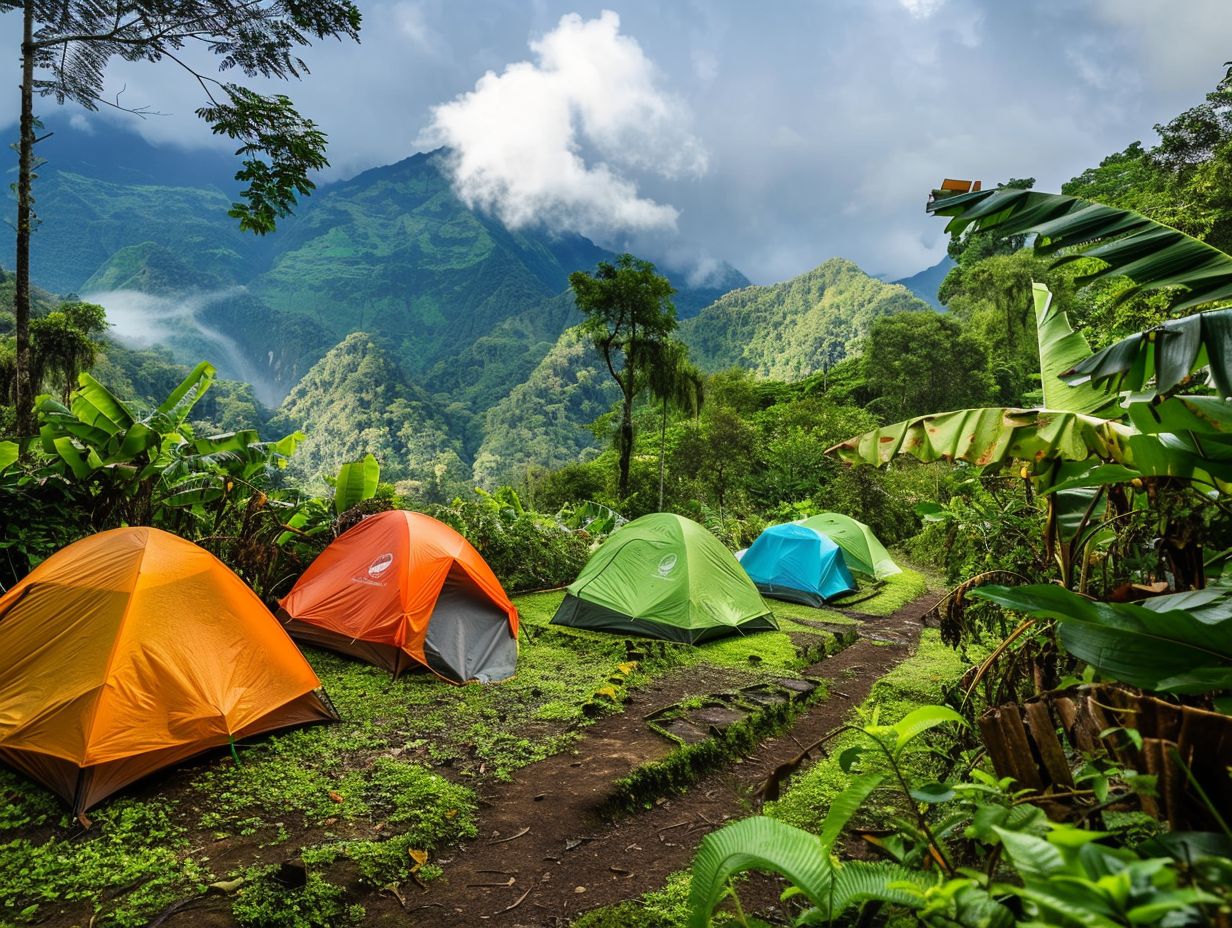
The process of setting up a backpacking tent necessitates adherence to precise instructions to guarantee the tent is correctly pitched at the chosen campsite, thereby offering a sturdy and weather-resistant shelter for one’s outdoor expedition.
- Initially, it is imperative to choose a suitable campsite characterized by level ground, preferably with natural windbreaks such as trees or rocks available.
- Proceed by laying out the tent body and groundsheet while ensuring that the entrance faces the desired direction.
- Assemble the tent poles in accordance with the manufacturer’s specifications and insert them into the corresponding sleeves.
- Subsequently, elevate the tent by inserting the poles into the grommets at each corner.
- To maintain tautness, securely anchor the tent stakes at a 45-degree angle.
- Properly adjust the guy lines to enhance stability and verify that all zippers and closures are adequately secured.
- It is essential to steer clear of common errors such as pitching the tent on uneven terrain, inadequately securing stakes, or leaving loose guy lines that may present tripping hazards or compromise stability.
How to Care for Your Backpacking Tent?
Proper care of a backpacking tent, through routine maintenance and prompt repairs, is imperative for prolonging its durability and maintaining optimal performance, ensuring its effectiveness as a reliable shelter for numerous outdoor excursions.
Regular examination of the tent for signs of wear and tear, such as minor tears or punctures, constitutes a crucial aspect of its upkeep. It is essential to verify the proper functionality of zips, the sealing of seams, and the cleanliness and dryness of the tent fabric following each use to forestall the occurrence of more substantial structural problems.
During the cleaning process, it is advisable to use mild, non-abrasive cleaning agents and avoid machine washing the tent. Proper storage of the tent in a cool and dry environment, correctly packed to avoid the growth of mould and mildew, can significantly extend its longevity.
Timely intervention in addressing common issues, such as repairing zip components or replacing damaged tent poles, can effectively reduce the risk of further deterioration and keep the tent in optimal working order.
What Are the Best Backpacking Tents on the Market?
The market provides a diverse selection of highly rated backpacking tents from well-established brands such as Big Agnes, MSR, REI, and Nemo Equipment. Each of these brands excels in different categories, catering to a range of backpacking requirements and preferences.
1. Best Overall: Big Agnes Copper Spur HV UL2
The Big Agnes Copper Spur HV UL2 is widely recognised as the premier backpacking tent, renowned for its exceptional combination of lightweight construction, robust materials, and user-centric features.
One of the standout features that distinguishes the Copper Spur HV UL2 as a top-tier selection is its remarkably low weight, coming in at approximately 3 pounds. This characteristic makes it particularly appealing to backpackers who prioritize reducing the overall weight of their gear while upholding high standards of quality.
Moreover, the Copper Spur HV UL2 boasts a construction using resilient materials capable of withstanding diverse weather conditions and rugged terrain. Its robust build ensures durability, instilling confidence during outdoor excursions. The tent’s intuitive design facilitates effortless setup and dismantling, streamlining the camping experience for users.
2. Best Budget: ALPS Mountaineering Lynx 1-Person Tent
The ALPS Mountaineering Lynx 1-Person Tent is recognised as a superior budget option, exhibiting exceptional value with a competitive cost per ounce alongside dependable performance and essential attributes.
In comparison to pricier alternatives, the Lynx Tent distinguishes itself through its robust construction and resilience against adverse weather conditions, rendering it a valuable choice for outdoor enthusiasts seeking quality without excessive expenditure.
The tent features a self-supporting structure facilitating straightforward assembly, a comprehensive rainfly for complete protection from environmental elements, and ample interior space suitable for a solitary camper.
Furthermore, its lightweight composition renders it particularly suited for backpacking excursions where minimising weight is a critical consideration.
Overall, the Lynx 1-Person Tent strikes an optimal equilibrium between cost-effectiveness and practicality.
3. Best for Solo Backpackers: MSR Hubba NX 1-Person Tent
The MSR Hubba NX 1-Person Tent stands out as the top choice for solo backpackers due to its lightweight and easily packable design, along with its spacious interior, making it a highly preferred option for individual adventurers.
The user-friendly setup of the Hubba NX enhances its attractiveness, enabling solo backpackers to conveniently pitch their shelter without complications following a strenuous day of trekking. Its robust construction from high-quality materials ensures dependable protection against adverse weather conditions, guaranteeing a restful night’s sleep.
The tent’s vestibule provides practical storage space for backpacks and gear, ensuring essential items are readily accessible.
Through its well-designed ventilation system, the Hubba NX facilitates airflow to prevent the accumulation of condensation within the tent, establishing a comfortable and breathable setting for the solo backpacker.
4. Best for Groups: REI Co-op Half Dome 2 Plus Tent
The REI Co-op Half Dome 2 Plus Tent stands out as the optimal choice for group camping endeavors, offering ample space and capacity to comfortably accommodate multiple campers while maintaining a focus on ease of assembly and durability.
Its spacious design facilitates unrestricted movement within the tent, ensuring that campers can navigate comfortably without feeling confined. This feature makes it particularly well-suited for group outings where individuals may find themselves spending prolonged periods indoors.
The streamlined set-up process of the Half Dome 2 Plus guarantees that even individuals with limited camping experience can quickly pitch the tent, thereby saving time and minimising any potential frustrations that may arise during set-up.
The utilization of robust materials in its construction underscores the tent’s ability to withstand a range of weather conditions, affording dependable shelter for camping groups across diverse environments.
5. Best for Extreme Weather: The North Face Mountain 25 Tent
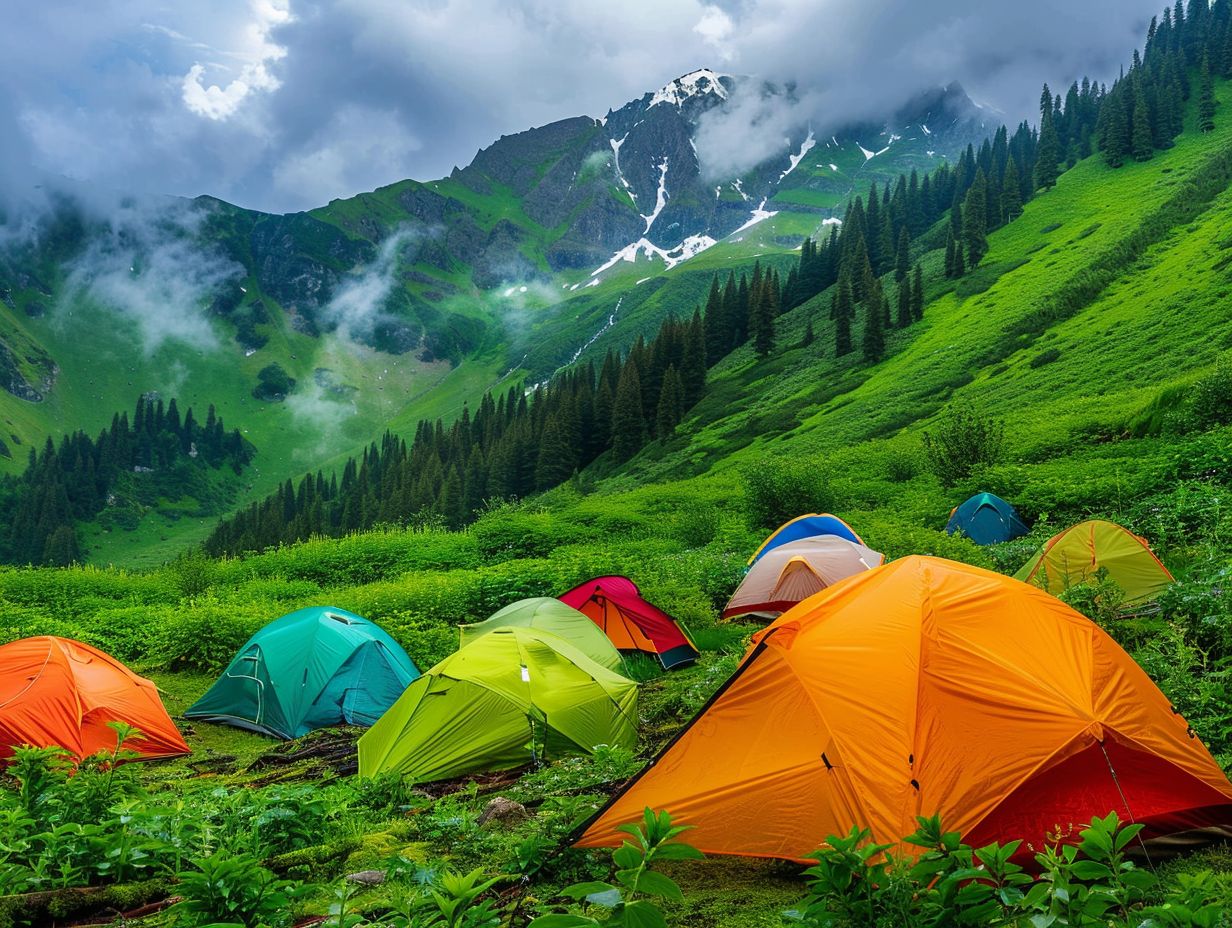
The North Face Mountain 25 Tent has been specifically designed for extreme weather conditions, blending robust durability with advanced weatherproof features to offer reliable protection in the most severe environments.
Crafted using resilient, high-quality materials like ripstop nylon and aluminium poles, this tent is structured to withstand strong winds and heavy snow loads. The dual-layer configuration offers insulation against low temperatures while enabling proper ventilation to reduce condensation internally. The waterproof flysheet and sealed seams ensure dryness even during heavy rainfall.
The geodesic shape, along with numerous guyline attachment points, enhances stability, making it a top choice for mountaineers, winter campers, and adventurers seeking shelter in challenging conditions.
Frequently Asked Questions
What are the key features to look for in a backpacking tent?
When choosing a backpacking tent, some important features to consider include weight, size, durability, ventilation, and ease of set-up. It is also important to consider the type of weather conditions the tent is designed for and the number of people it can accommodate.
What are the different types of backpacking tents?
There are several different types of backpacking tents to choose from, including single-wall, double-wall, and hybrid tents. Single-wall tents are lightweight and ideal for fair weather conditions, while double-wall tents offer more protection in harsher weather. Hybrid tents combine the best of both worlds, with a lightweight single-wall design and added protection of a double-wall.
How do I choose the right size backpacking tent?
The size of your backpacking tent will depend on the number of people you will be camping with as well as the amount of gear you need to store inside. It is important to consider the tent’s dimensions and interior space to ensure everyone can fit comfortably.
How do I properly maintain my backpacking tent?
To keep your backpacking tent in good condition, it is important to properly maintain it. This includes keeping it clean and dry, avoiding storing it while wet, and using a groundsheet to protect the bottom. After each trip, make sure to set up the tent in a well-ventilated area to allow it to air out and avoid mildew growth.
Can I use a backpacking tent for other types of camping?
Yes, you can use a backpacking tent for other types of camping, such as car camping or music festivals. However, keep in mind that these tents are designed to be lightweight and compact, so they may not have as much space or durability as traditional camping tents. It is important to consider your specific needs and the conditions you will be camping in before deciding on a tent to use.

